Around me, ten people fidget with spotting scopes, attach long lenses to cameras, sip coffee and casually reference recent eBird reports.
It is, for all intents and purposes, a typical birding field trip. Except for one significant detail: the location.
Forget a peaceful morning at the local marsh. Around us, heavy machinery beep-beep-beeps as it backs up, and large trucks constantly rumble up the road. The scenery is dominated by scraped earth. And trash. Mountains of trash.
We’re birding at a landfill.
And yes, there are birds. In fact, we see hundreds of birds directly in front of us.
Specifically, gulls.
Yes, I’m on a field trip to watch gulls at the county landfill. Later, when I’ll mention this to others, I’ll get a similar reaction: “Gull watching? Don’t you just see them anywhere? Isn’t a gull a gull?”
Well, no. It turns out, gull identification is one of the most challenging skills in birding. And to get good at it? Well, you have to go to where the gulls are.
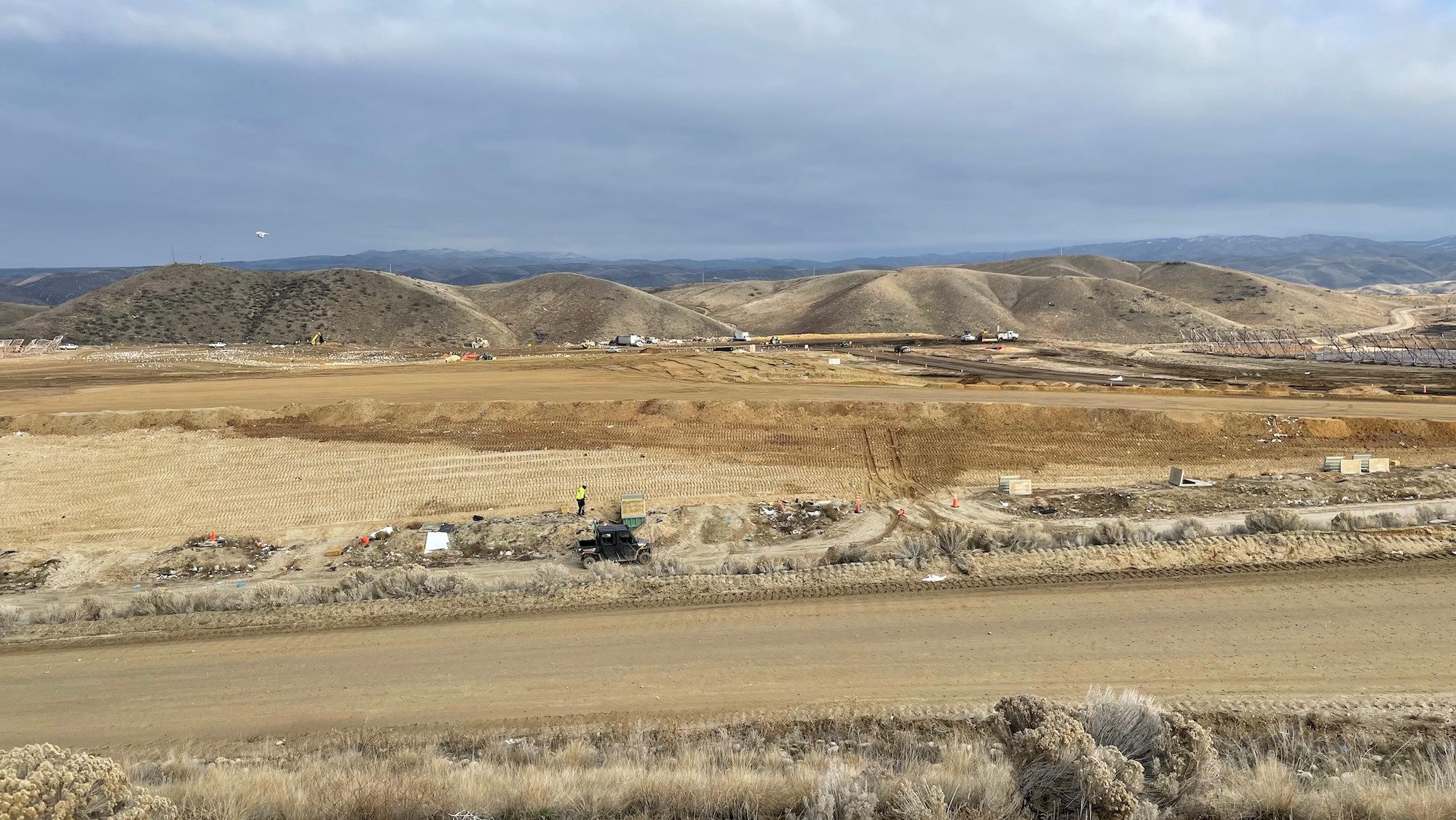
Gull Day
We gather on a brisk, windy morning at a nearby trailhead parking lot in the foothills of Boise, Idaho. I had seen the outing advertised by the Golden Eagle Audubon Society, an organization that offers an impressive array of birding trips.
Many of these trips are pretty standard fare: visits to local wetlands, migratory hot spots, sage grouse leks. But the trip to the Ada County Landfill in southwest Idaho has been popular for more than 20 years, led by local birding expert RL Rowland.
Rowland is well-known as a volunteer and teacher, and also for his impressive identification skills – particularly of gulls.
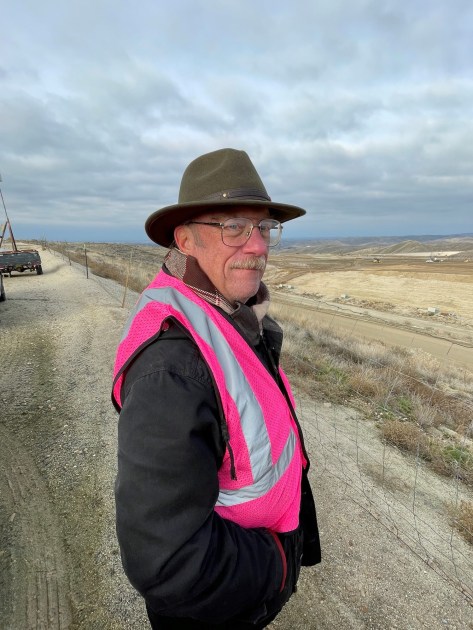
We’re staging here so that he can review the rules. Birding at landfills has been growing in popularity, for reasons I’ll get to shortly. Some landfill managers have responded by closing access. The Ada County Landfill has instead instituted a set of rules and protocols for visiting birders, to keep them safe and out of the way of daily operations.
Rowland wants to keep it that way, so he gives a complete rundown of the rules. Sign in and out at the office, letting them know a day in advance if you intend to come birding. Always wear a safety vest. Know the designated birding area and stick to it. No wandering. No hiking.
The birders are anxious to get going. There are reports of a lesser black-backed gull, a local rarity. One woman is here to celebrate her birthday with some unusual birding. Several are hoping to take gull photos. Others seem to attend every local field trip and enjoy posting the results on eBird.
We soon are in vehicles and drive to the landfill entrance, where we sign the necessary paperwork and are issued bright pink vests with Landfill Birdwatcher embossed on back. The landfill staff know the routine and welcome the activity. In a state known for its outdoor recreation, this has to be one of the more unusual offerings.
In the past, gulls could be viewed up close at some of the leach ponds, but a local falconer has been used to keep them away from the toxic waters. Today, we’ll watch gulls from a longer distance. But they’re easy to see in the barren ground in front of us. A great swirling mass of gulls.
A thought crosses my mind: how on earth am I going to identify individual gulls?
Also: why?

“A Gull is a Gull”
First, let’s clear up a common misperception: not all gulls are found on the beach. You can find gulls around North America (and many parts of the world), including in interior states like Idaho. You won’t hear a birder use the term “sea gull.”
For many, gulls are “trash birds” that steal snacks and raid garbage during vacations. Viewed from a seaside hotel, gulls also look awfully similar. I suspect that most casual viewers think they are all one species.
“Almost nobody pays any attention to them,” says Rowland. “To most, a gull is a gull.”
In fact, at least 28 gulls can be seen in North America, with additional vagrant species showing up from time to time. But let’s be clear here. Even if you’re looking, gulls do look awfully similar.
For serious birders, that’s a big part of the appeal.
As bird expert Kenn Kaufman notes in his excellent Field Guide to Advanced Birding, “In some ways, gulls are the ultimate birds for people interested in field identification.”
He goes on to write, “All go through various plumages before they reach adulthood, so even though there are only a little more than two dozen species in North America, they present nearly 200 distinctly different plumages. And each of these is affected by a large amount of variation.”
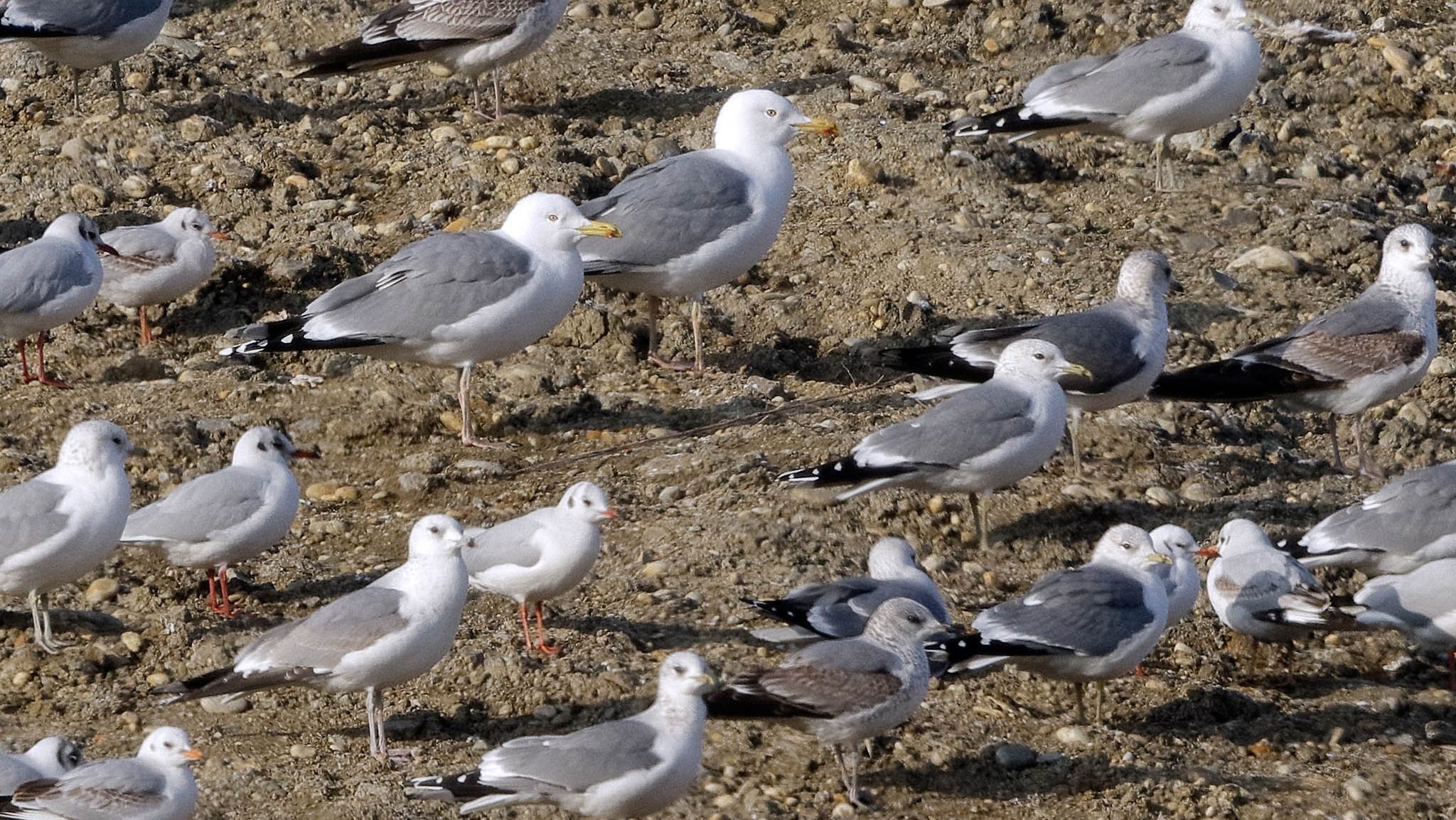
So not only do gulls look similar, individual species look different depending on age and other factors. A gull goes through three feather molts in its first year, so you get some idea of the level of identification difficulty.
It’s enough to cause a bit of anxiety among even serious birders. (One of the most popular reference articles is titled “Identifying Gulls: Don’t Panic!”). But gull ID is a skill that you can learn over time, and the challenges are appealing to enthusiasts like Rowland.
Rowland begins showing his observational skills in the parking lot. Although we had never met, it turns out he’s an avid reader of Cool Green Science. Within seconds of shaking hands, he tells me I look nothing like my author bio photo on the site. I guess I’ve gone through a few molts myself since that photograph was taken.
Over the next couple of hours, I’ll hear a lot about how gulls look different as they age. Just like us. At first glance, though, you just see a bunch of birds in a flock, in seemingly uniform whitish feathers. To untrained eyes, a gull is a gull.
Look closer.
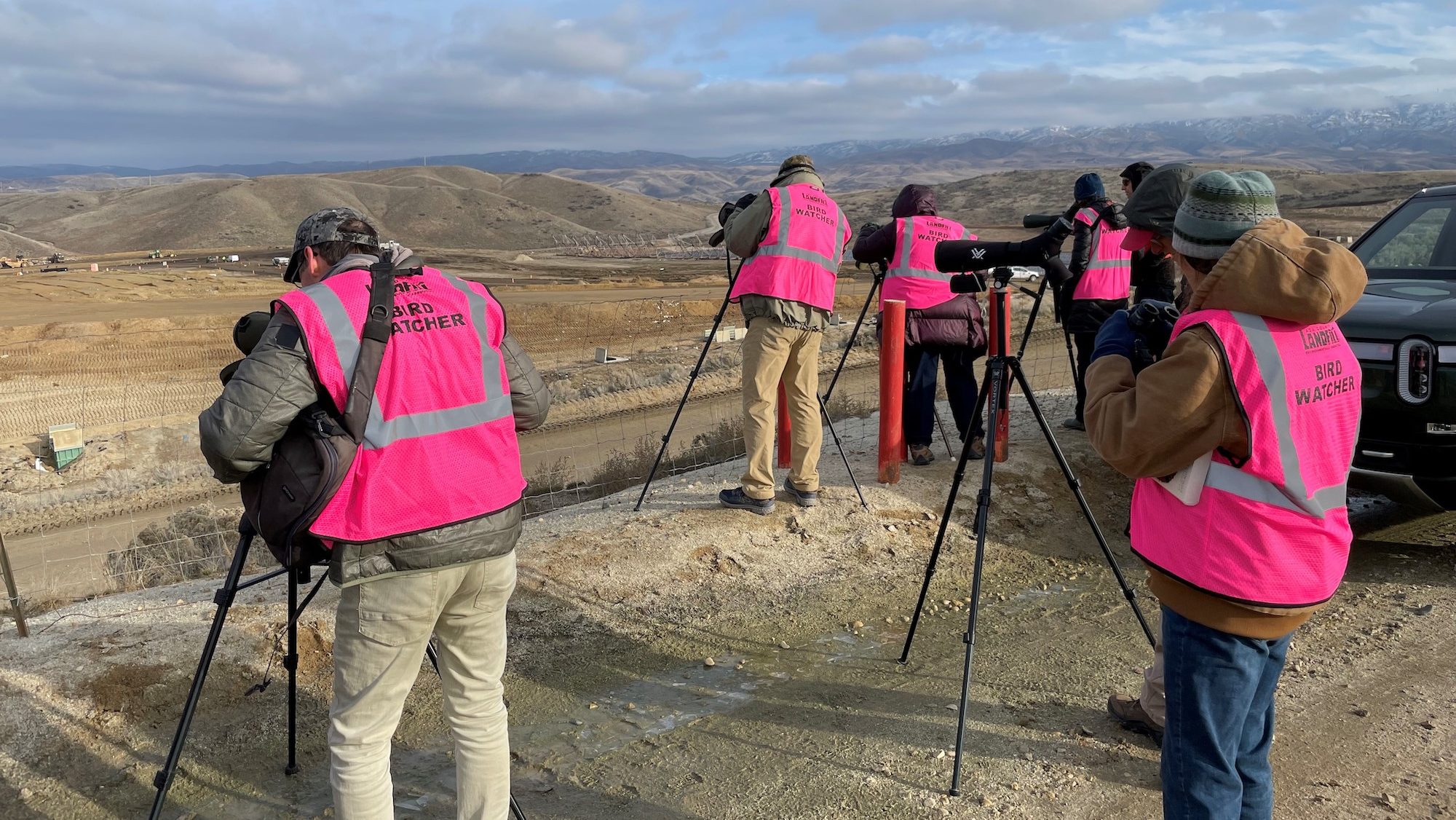
Just to the Left of the Big Trash Heap
We begin scanning the 500 or so gulls in front of us with spotting scopes and binoculars. Most of these are California and ring-billed gulls, abundant species that all birders here have seen countless times. The participants today are hoping for something more rare to add to their lists.
Rowland has brought four field guides specifically devoted to gulls. He’s also quick to offer encouragement. “I know it’s cold and the wind is blowing,” he says. “But you need to take your time and work through the flock.”
He’s been doing this throughout the winter for more than 20 years. He’s seen a variety of gull species and notes that these outings have resulted in a landfill bird list exceeding 130 species. Where there is food and (relatively) open space, you’re likely to find birds.
I’m looking at the flock and I’m not going to lie: the gulls all looked pretty much the same.
Then, an excited birder: “I think I have a lesser black-backed gull.”

The lesser black-backed gull was first noted in the United States in 1934, on the East Coast. It now can be seen in many parts of the country in winter, aided and abetted by food at landfills. But it’s still an uncommon sighting in Idaho.
Soon Rowland and others confirm the sighting. “It’s just to the left of the big trash heap.”
There are a whole lot of gulls to the left of the big trash heap. A helpful birder says he has it lined up in the spotting scope. I look, and there are at least a couple dozen birds in view.
“You’re looking for little differences,” Rowland is saying. “Look for one that stands out a little.”
In the case of a mature lesser black-backed gull, the grayish back stands in sharp contrast to its white underparts. But contrast can be difficult to discern.
“Do you have it yet?” someone is asking me.
“Ummm.”
“Look for the red spot on the bill,” Rowland adds.
And then, there it is. A bright yellow bill and a bright red spot. Now that I can concentrate on it, the lesser black-backed gull stands out from the crowd.
Rowland has moved on to a herring gull. Now he’s telling me to look for a slightly larger bird.

“Gulls tend to segregate by size,” he says. “You see the smaller gulls in their own clumps. The bigger birds don’t attack, they intimidate.”
Rowland is a natural teacher; he has an encyclopedic knowledge of Idaho birds but patiently explains how to simplify identification to new and experienced birders. “I don’t want people to be afraid of gull ID,” he says. “There are simple ways to approach this.”
The wind picks up and people are beginning to huddle against their vehicles. After picking through the large flock, no one can find additional new species. But there are other birds flying around including a merlin, an American kestrel, a couple of bald eagles, a northern shoveler on the pond.
Rowland has been a birder since the 1980s but became especially intense after his retirement from the Air Force in the late 1990s. He says he’s slowed down a bit, but still birds several times a week – and not infrequently, the landfill is part of that rotation.
“It keeps me off the couch,” he says with a laugh.
In the weeks that follow our outing, I’ll see a gull, pull up the binoculars – and quickly feel overwhelmed. But if there’s one reminder I needed from Rowland, it’s this: relax, focus, take in the surroundings. That’s what birding can and should do.
And that’s true even when you’re standing over mounds of trash and listening to a chorus of dump trucks. Even in such a place, if you are alert and aware, there are cool birds to be found.
*The original version of this post mistook a greater black-backed gull for a lesser black-backed in one of the photos. We thank our readers for the correction. What can we say… gulls take practice!
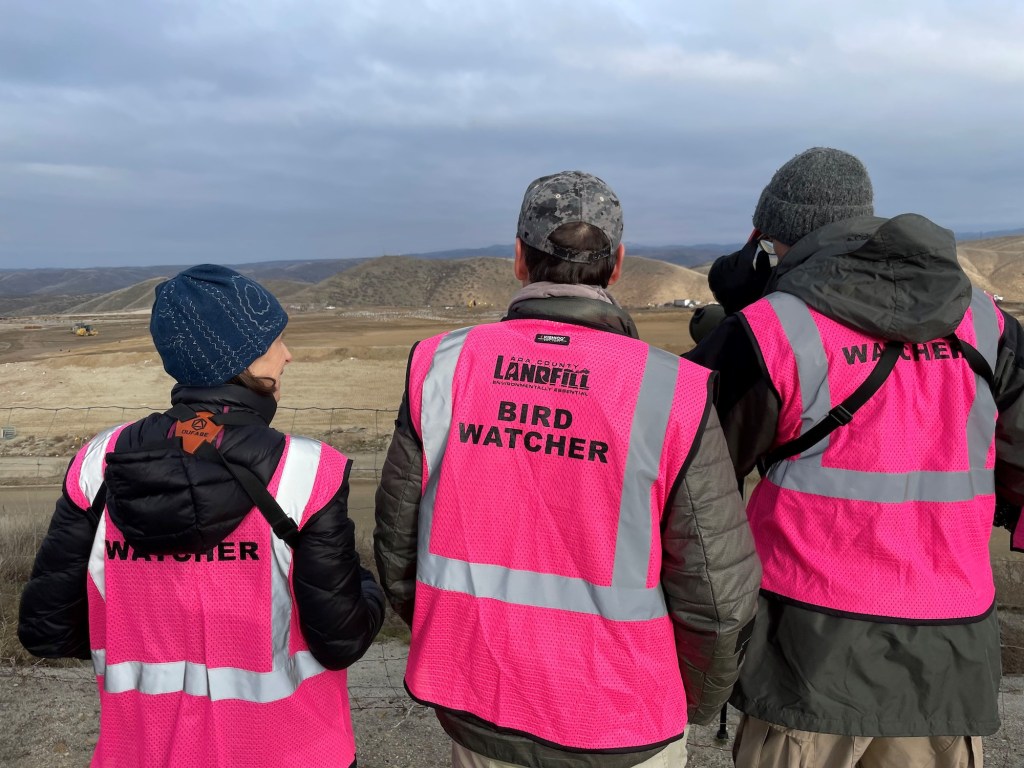



The close up pic of the LBB sure looks like a GBB to me – pinkish not yellowish legs, very dark back; bill size.
Great article, Matt! One correction though – the picture labeled as a Lesser Black-backed Gull is actually of a Greater Black-backed Gull, which I suspect is quite a rare bird in ID.
Fun article Matt, and so great to see RL recognized for his incredible knowledge.
Wonderful!!
Great blog post about gulling. And RL is one of the best “gull-ible” birders in our area. Thanks for writing it!
Thank you for the blog. RL Rowland is a great gift to Idaho birding and GEAS.
In spite of RL’s encouragement in the past I have never gotten myself to bird for Gulls at the dump.
For one thing I would have to stand in one place a long time and remember the no hiking rule … kind of against my habituations 🙂